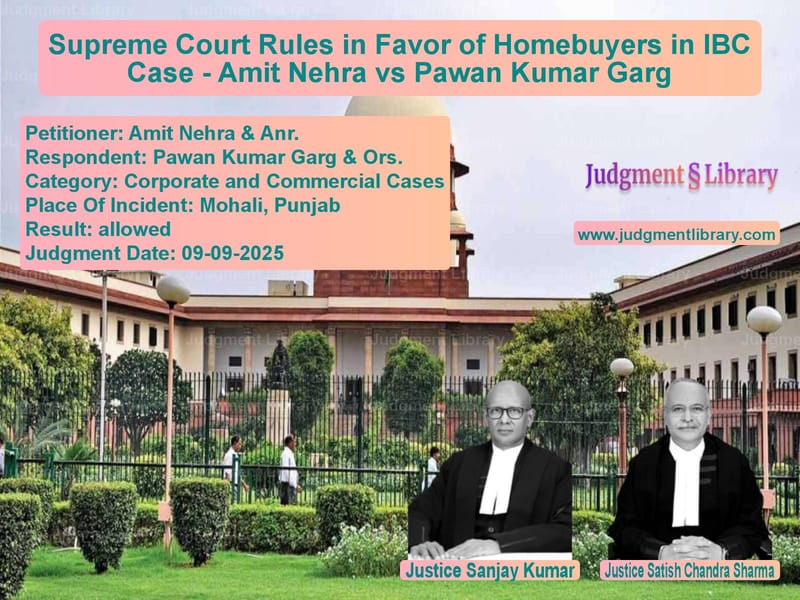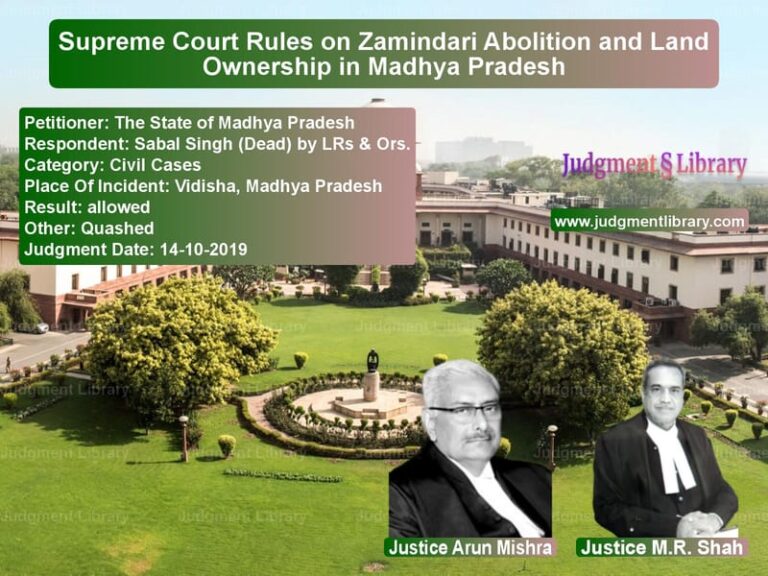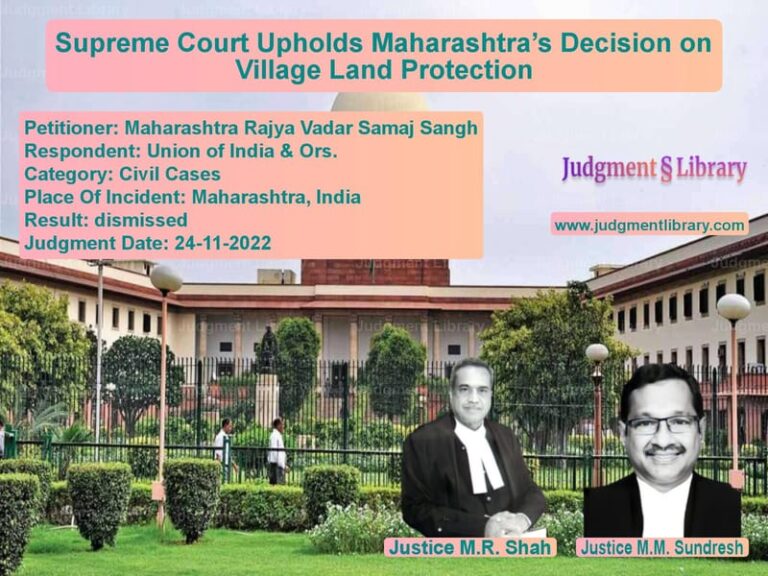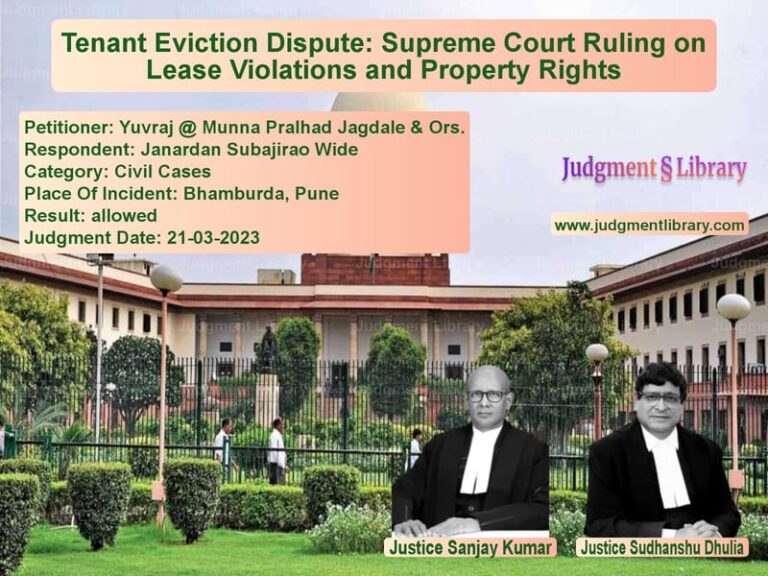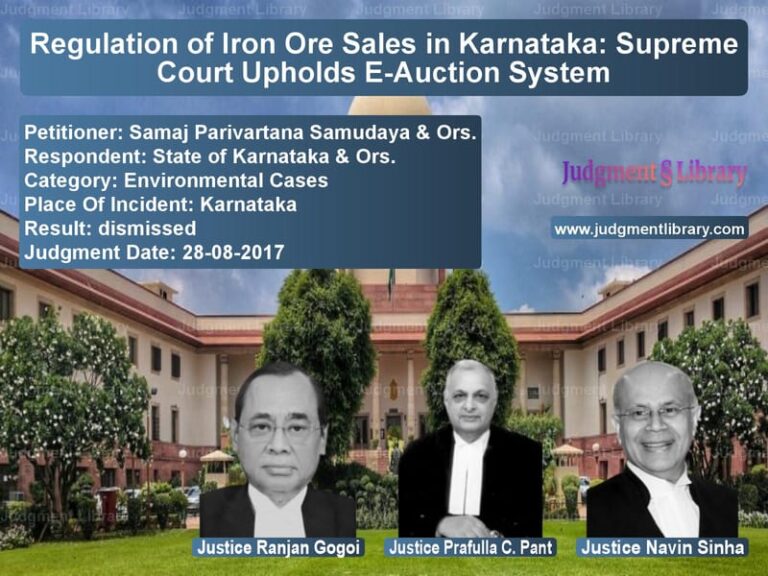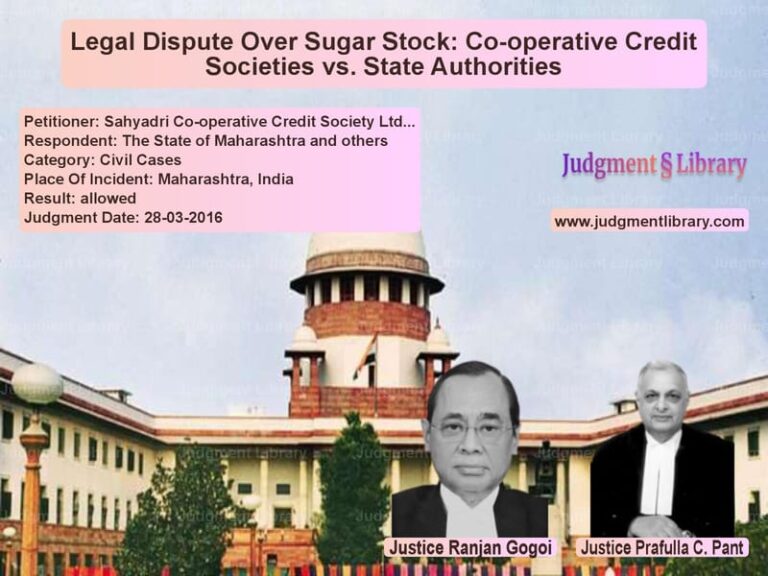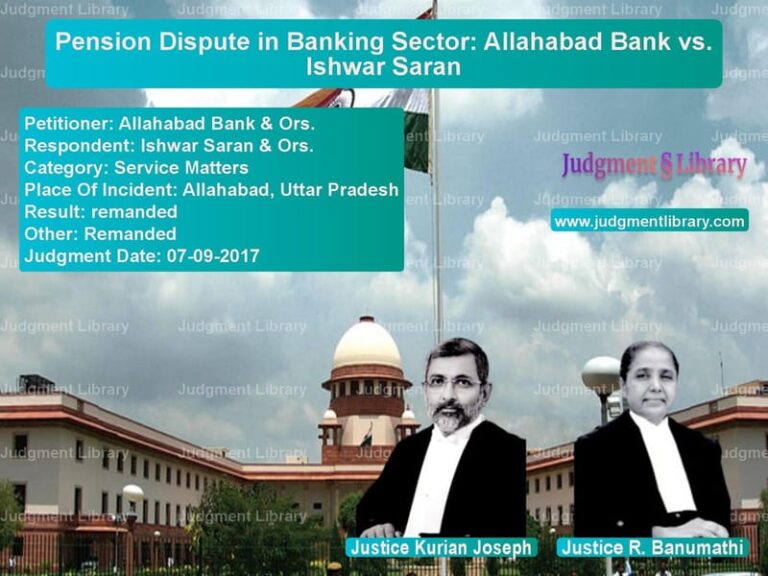Supreme Court Rules in Favor of Homebuyers in IBC Case – Amit Nehra vs Pawan Kumar Garg
In a significant judgment that brings relief to thousands of homebuyers across India, the Supreme Court has delivered a landmark verdict protecting the rights of allottees in real estate projects undergoing corporate insolvency. The case of Amit Nehra & Anr. versus Pawan Kumar Garg & Ors., decided on September 9, 2025, represents a crucial interpretation of the Insolvency and Bankruptcy Code (IBC) and its application to homebuyers who have invested their life savings in dream homes that never materialized.
The Story of Amit Nehra’s Unfulfilled Dream
The story begins in 2010 when Amit Nehra and his family, residents of Bengaluru, decided to invest in a modern residential complex being developed by M/s Puma Realtors Private Limited, an IREO Group company. The project, named IREO Rise (Gardenia), was situated in Sector 99, SAS Nagar, Mohali, and promised to be an integrated residential township with all modern amenities. On May 27, 2011, the Nehra family executed an Apartment Buyer’s Agreement for the purchase of Apartment No. GBD-00-001 in Block D, with a total sale consideration of Rs. 60,06,368. They paid Rs. 57,56,684 – almost the entire amount – with the balance agreed to be adjusted for delays in possession.
As per the agreement, possession was to be handed over on or before November 27, 2013. However, the corporate debtor failed to deliver possession within the agreed period or thereafter. Left with no option, the appellants instituted Consumer Complaint No. 279 of 2018 before the State Consumer Disputes Redressal Commission, Chandigarh, seeking refund of the amount paid along with interest and compensation.
The Insolvency Proceedings Begin
While the consumer complaint was pending, on October 17, 2018, the National Company Law Tribunal (NCLT) admitted an application under Section 7 of the IBC against the Corporate Debtor, commencing the Corporate Insolvency Resolution Process (CIRP). The Consumer Commission accordingly disposed of the complaint with liberty reserved to the appellants to pursue their claim before the competent authority in the CIRP proceedings.
The Interim Resolution Professional issued a public announcement on October 22, 2018, calling upon all creditors, including homebuyers, to submit their claims. The appellants, who were allottees of both a plot in the “IREO Hamlet” project and the present apartment in “IREO Rise (Gardenia),” initially submitted their claim for the plot on October 29, 2018. For the apartment, they claimed to have physically submitted Form-CA together with supporting documents on January 11, 2019, at the project office of the Corporate Debtor at Mohali. However, the respondents disputed this filing, asserting that no such physical claim was received at the notified address of the Resolution Professional.
The Crucial Turn of Events
On January 31, 2020, the Resolution Professional, citing incomplete records of the Corporate Debtor, addressed an email inviting creditors to resubmit claims. Acting thereupon, the appellants resubmitted their claim through email on February 7, 2020. Subsequently, on April 30, 2020, the Resolution Professional published the list of financial creditors, wherein the appellants’ name was reflected at Serial No. 636, with their claim duly admitted to the extent of Rs. 57,56,684.
The Resolution Plan submitted by the Successful Resolution Applicants (“One City Infrastructure Pvt. Ltd.” and “APM Infrastructure Pvt. Ltd.”) was approved by the Committee of Creditors on August 23, 2019, and subsequently approved by the NCLT on June 1, 2021. The plan contained distinct provisions for timely claims and belated claims under Clause 18.4.
Despite the admitted inclusion of the appellants’ claim in the list of financial creditors, possession of the allotted apartment was not delivered. The appellants approached the Adjudicating Authority seeking directions for execution of the conveyance deed and handover of possession, which was rejected. Their appeal before the NCLAT met with the same fate, leading to the present appeal before the Supreme Court.
The Arguments Before the Supreme Court
The appellants contended that the entire approach of the Adjudicating Authority and the NCLAT was vitiated by a fundamental misappreciation of facts and misapplication of the relevant clauses of the approved Resolution Plan. They emphasized that they were bona fide homebuyers who had paid almost the entire consideration and had acquired a vested right in the apartment allotted to them.
Learned Counsel for the Appellants submitted: “It is emphasized that the Appellants claim was first submitted through their authorized representative on 11.01.2019, immediately upon withdrawal of their consumer complaint, and in any event, was resubmitted pursuant to email of the Resolution Professional inviting homebuyers/financial creditors to resubmit claims, on 07.02.2020. The said claim stood verified and admitted, as is borne out by the list of financial creditors published on 30.04.2020, where the Appellants appear at Serial No. 636 whereby their claim stood admitted to the extent of Rs. 57,56,684. Once their claim was duly verified and admitted, the Appellants submit that there remained no basis for treating them under Clause 18.4(xi) of the plan, which governs cases of unverified or uninformed claims.”
The appellants argued that Clause 18.4(xi) applied only in cases where the allottee has not filed a claim with the Resolution Professional, or having filed, it has not been verified, or having been verified, it has not been informed to the Resolution Applicant. By contrast, Clause 18.4(vi)(a) governed cases of allottees whose claims stand verified and admitted. Therefore, they were entitled to delivery of possession of the apartment or an equivalent alternative unit, and not to a reduced refund of 50% of the total consideration.
On the other hand, the respondents submitted that the appellants failed to file any valid claim within the statutory timelines prescribed by the Code and the public announcement. They denied the alleged physical filing at the Mohali project office on January 11, 2019, and asserted that the Form-CA itself calculated interest up to February 7, 2020, demonstrating preparation and filing only on that date.
Learned Counsel for the Respondent(s) argued: “It is further urged that by the time the Appellants filed their claim on 07.02.2020, the Resolution Plan had already been approved by the Committee of Creditors on 23.08.2019. Consequently, the Appellants claim fell squarely within the ambit of Clause 18.4(xi) and 18.4(xix) of the Resolution Plan, entitling them only to a refund of 50% of the principal sum.”
The Supreme Court’s Analysis and Reasoning
The Supreme Court, after anxious consideration of the submissions and material on record, identified the central question: whether the appellants, being allottees who had paid almost the entire consideration, were to be treated as belated claimants entitled only to refund of 50% of their principal deposit under Clause 18.4(xi), or whether, their claim having been duly verified and incorporated in the list of creditors, they were entitled to possession in terms of Clause 18.4(vi)(a) of the Resolution Plan.
The Court noted that the appellants were bona fide homebuyers who had booked an apartment as far back as 2010 and executed a Buyer’s Agreement in 2011, paying almost the entire sale consideration. While the factual dispute about the January 11, 2019 filing had occupied considerable attention before the lower fora, the Court found that resolution of the appeal did not hinge upon this disputed assertion.
The Court observed: “The admitted and undisputed position remains that the Appellants claim was resubmitted on 07.02.2020; that it was duly verified by the Resolution Professional; and that it was incorporated in the published list of creditors dated 30.04.2020. Once such verification and incorporation occurred, the claim acquired full legal recognition within the CIRP process.”
The Court expressed its inability to countenance the approach of the NCLAT in brushing aside this admitted position and treating the appellants as if they had not filed any claim at all. The publication of the list of financial creditors was recognized as an act in discharge of a statutory duty by the Resolution Professional that cannot be reduced to a meaningless formality.
The Court relied on the precedent set in Puneet Kaur v. K.V. Developers Pvt. Ltd. & Ors., where it was observed: “However, we are of the view that the claim of those homebuyers, who could not file their claims, but whose claims were reflected in the record of the corporate debtor, ought to have been included in the information memorandum and resolution applicant, ought to have taken note of the said liabilities and should have appropriately dealt with them in the resolution plan. Non-consideration of such claims, which are reflected from the record, leads to inequitable and unfair resolution as is seen in the present case.”
Interpretation of the Resolution Plan
The Court meticulously examined the structure of Clause 18.4 of the Resolution Plan, which prescribed distinct treatments for different categories of allottees. Clause 18.4(ii) stipulated that where the claim has been filed and admitted by the Resolution Professional, and the allotment letter issued, the claim shall be honored in full. Clause 18.4(vi)(a) set out the payment plan for existing allottees, providing for handover of units or execution of conveyance.
By contrast, Clause 18.4(xi) was residuary in nature, applying where no claim has been filed, or if filed, not verified by the Resolution Professional, or if verified, not communicated to the Resolution Applicant. Such allottees were extended only a reduced benefit of refund of 50% of the principal amount deposited.
The Court held: “The Appellants case, on admitted facts, does not fall within Clause 18.4(xi). Their claim was filed, verified, and informed to the Successful Resolution Applicant, as is evidenced by the entry at Serial No. 636 in the list of creditors dated 30.04.2020, admitting their claim to the extent of Rs. 57,56,684. Once so admitted, their case squarely falls within Clause 18.4(ii) read with Clause 18.4(vi)(a) of the Resolution Plan.”
The Court emphasized that the respondents’ reliance on Clause 18.4(xi) was misconceived, as that clause was intended to apply only to allottees who had defaulted in filing or pursuing their claims. The appellants could not be so characterized, having paid nearly the entire consideration, submitted their claim, and had it duly verified and admitted by the Resolution Professional.
The Human Element and Conclusion
The Court highlighted the plight of individual homebuyers who invest their life savings in the hope of securing a roof over their heads. The appellants had paid nearly the entire sale consideration as far back as 2011. To deny them possession today, despite their claim having been duly verified and admitted, would inflict unfair and unwarranted prejudice.
The Court concluded: “What is critical to note is that this is not a case of entertaining a fresh claim beyond the Resolution Plan. It concerns an allottee whose claim was verified and admitted by the Resolution Professional and reflected in the list of financial creditors well before approval of the Plan by the Adjudicating Authority. To disregard such an admitted claim and confine the Appellants to the limited benefit under Clause 18.4(xi) is not to preserve the binding effect of the plan but to misapply it. Clause 18.4 itself draws a clear distinction between verified claims and belated or unverified claims; to obliterate that distinction would render the scheme otiose. Relegating bona fide allottees, who have paid substantial consideration years in advance, to the status of mere refund claimants runs contrary to the very object of the legislative framework.”
In its final directions, the Supreme Court set aside the judgments of the NCLAT and NCLT and directed the respondents to execute the Conveyance Deed and hand over possession of Apartment No. GBD-00-001, Block D, IREO Rise (Gardenia), Mohali to the appellants within two months. The appeal was allowed with no order as to costs, bringing a happy conclusion to a legal battle that lasted years and reaffirming the rights of homebuyers in insolvency proceedings.
Petitioner Name: Amit Nehra & Anr..Respondent Name: Pawan Kumar Garg & Ors..Judgment By: Justice Sanjay Kumar, Justice Satish Chandra Sharma.Place Of Incident: Mohali, Punjab.Judgment Date: 09-09-2025.Result: allowed.
Don’t miss out on the full details! Download the complete judgment in PDF format below and gain valuable insights instantly!
Download Judgment: amit-nehra-&-anr.-vs-pawan-kumar-garg-&-o-supreme-court-of-india-judgment-dated-09-09-2025.pdf
Directly Download Judgment: Directly download this Judgment
See all petitions in Bankruptcy and Insolvency
See all petitions in Consumer Rights
See all petitions in Property Disputes
See all petitions in Contract Disputes
See all petitions in Corporate Compliance
See all petitions in Judgment by Sanjay Kumar
See all petitions in Judgment by Satish Chandra Sharma
See all petitions in allowed
See all petitions in supreme court of India judgments September 2025
See all petitions in 2025 judgments
See all posts in Corporate and Commercial Cases Category
See all allowed petitions in Corporate and Commercial Cases Category
See all Dismissed petitions in Corporate and Commercial Cases Category
See all partially allowed petitions in Corporate and Commercial Cases Category

